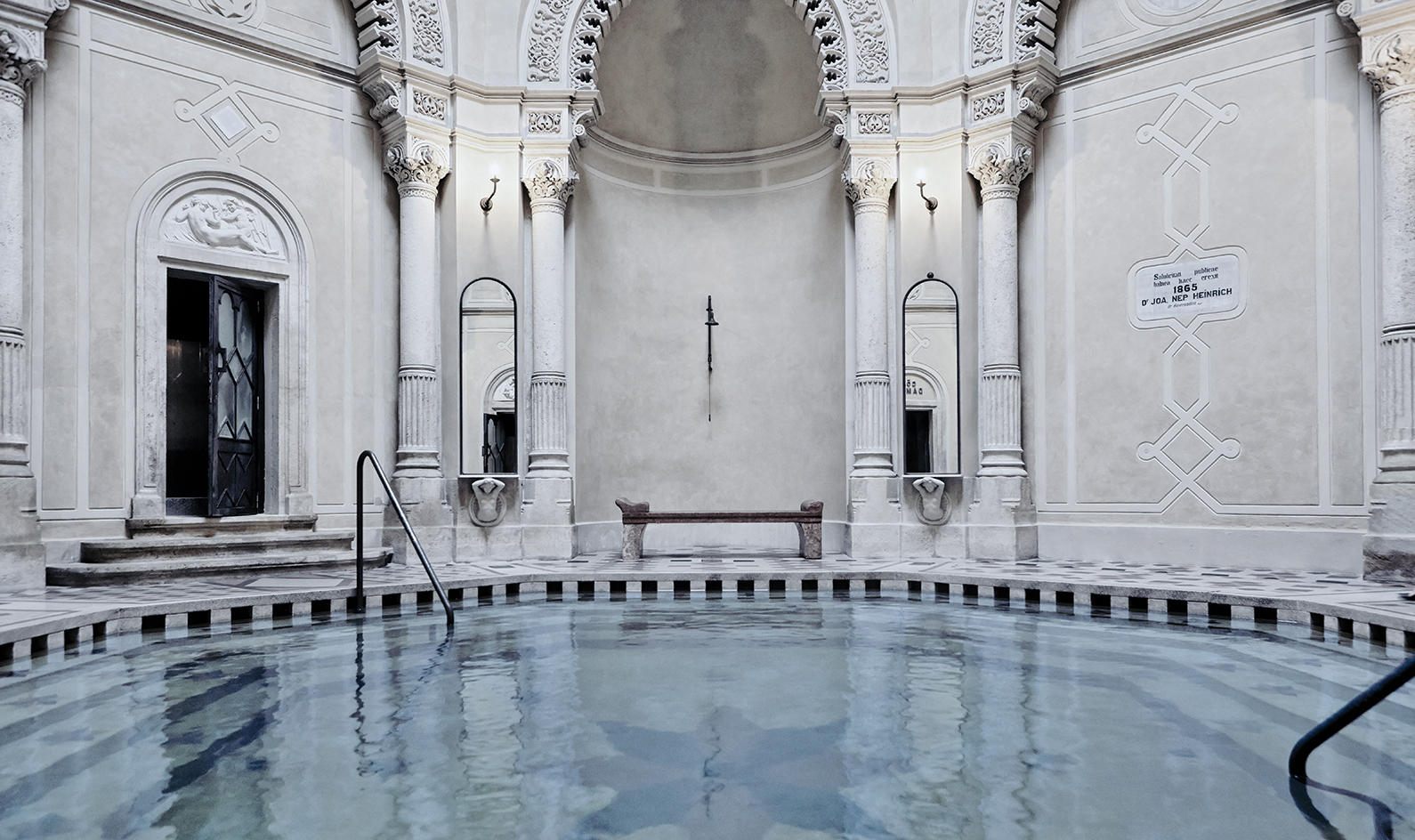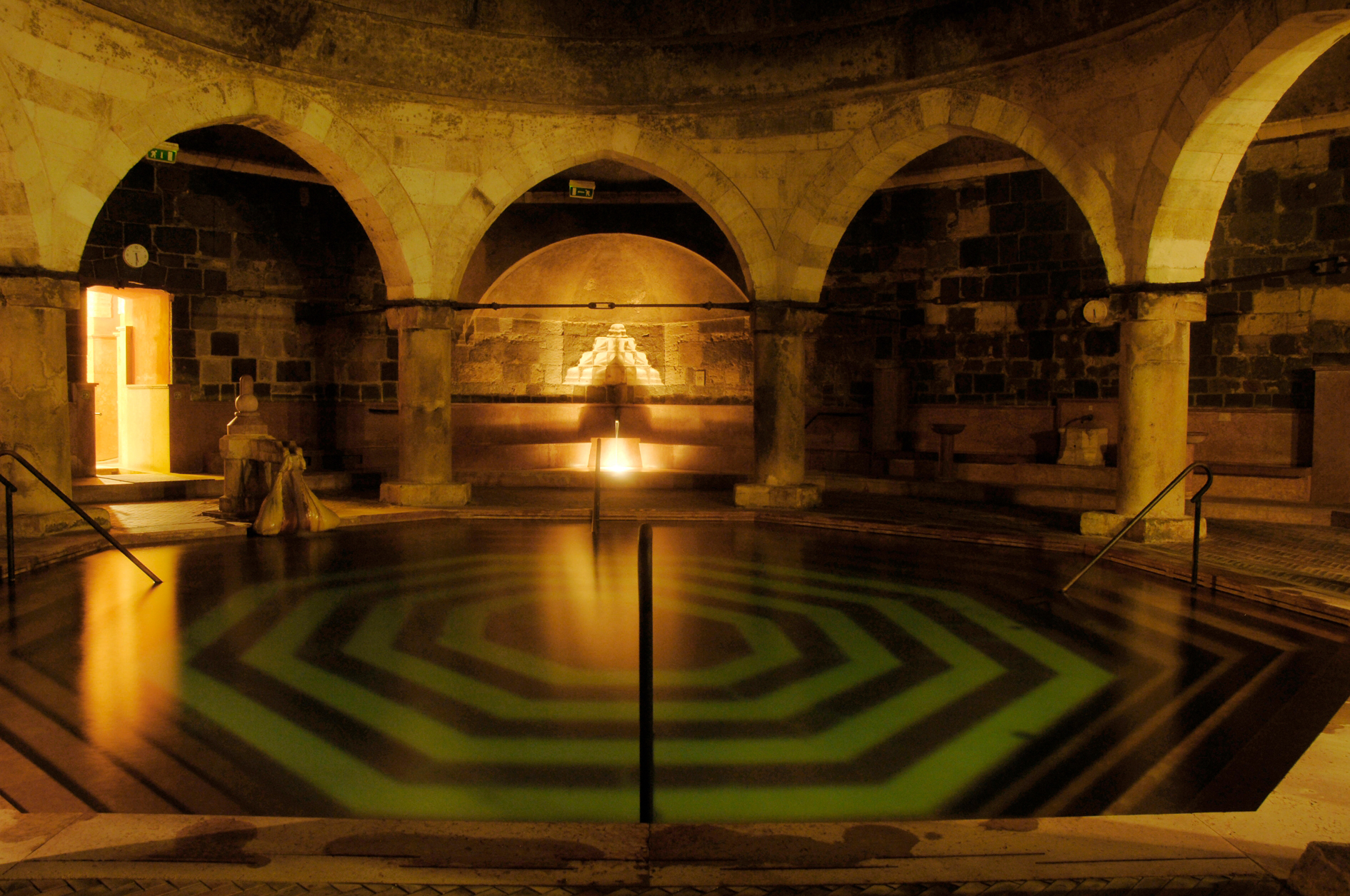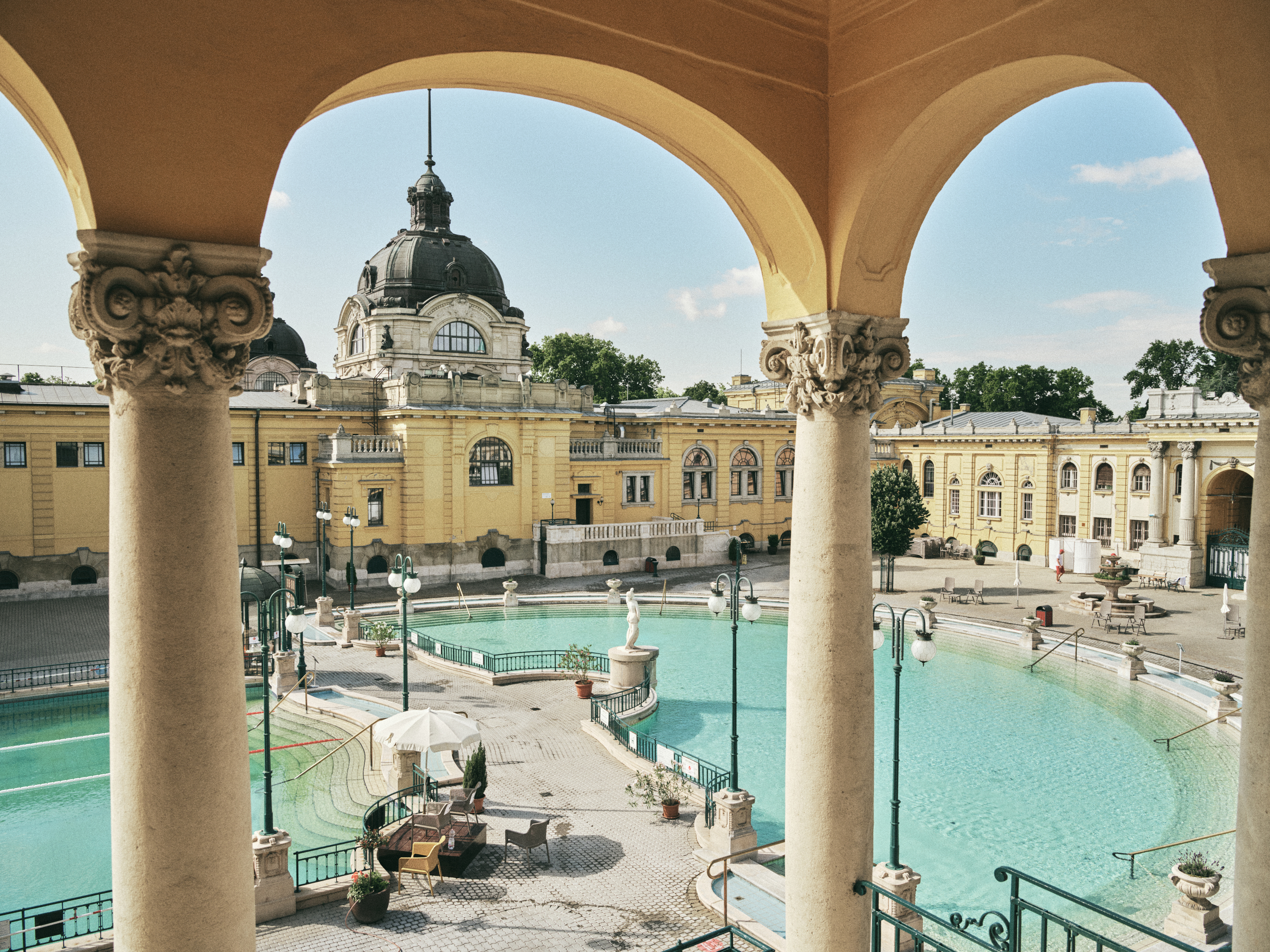Discover the secrets of Budapest’s famous healing baths
The co-founder of Budapest-based Omorovicza skincare talks us through the history of the spa city’s famous baths and the secrets of their healing waters

Skincare was the last thing on Margaret de Heinrich de Omorovicza’s mind when she moved to Budapest in 2001. ‘I came to Hungary because I was an American diplomat; I was chief of staff at the US Embassy and also in charge of healthcare outreach. It was just a really, really busy time.’ But when her then boyfriend (and heir to the noble Omorovicza family baths) introduced her to the city’s culture of thermal water spas, she was intrigued.
‘I’m someone who had horrible skin since I was 13, when I was marched off to a dermatologist and put on Accutane,’ she says, referring to the drug used to treat acne. ‘But I noticed such a difference, such a transformation [when I went to the baths] that it got me going back over and over again and got me interested in finding out more about this curative culture.’

The Rudas bath in Budapest
Fast-forward a few years and Margaret and her now husband, Stephen de Heinrich de Omorovicza, have created the respected Omorovicza skincare brand and opened the Omorovicza Institute in Budapest, where students can learn the age-old methods of the local spas and visitors can experience a range of treatments.
A history of Budapest’s spas
‘What makes these baths so unique is that Budapest is a geological curiosity. The Earth's crust is thinner at the Carpathian Basin than any other place in the world and that means that Budapest has more thermal water sites than any city. It’s for that reason that it’s called the “city of spas”. And the word “spa” is actually an acronym of the Latin sanitas per aquam, which means health through water,’ says Margaret.

The Szechenyi Baths in Budapest built in 1913
‘And I remember when I first moved to Budapest and after Steve and I met, he, being Hungarian, really took it upon himself to illuminate all the elements of city that he felt were really the local treasures. At the top of his list, and at the top of most Hungarians’ lists, are these baths.
‘We went to what is probably the most special bath in Hungary. It’s called the Rác, where you enter huge copper doors and the first thing that greets you is a veil of steam. Once your eyes adjust, the first thing you see are these marble frescos, beautiful designs on the base of pool, open cupolas 50 ft high so the steam can come out.
‘We get in and Steven starts telling me the history. How they were discovered 2,000 years ago by the Romans under Marcus Aurelius, who noticed as he was marching through the country that any of his soldiers who were wounded would heal very quickly if they waded into these bubbling springs.
Receive our daily digest of inspiration, escapism and design stories from around the world direct to your inbox.

The oldest room in the Rác Thermal Bath, dating back to the 16th century
‘That really started the bathing culture, and then during the Middle Ages you had the Knights Templar come and build hospices on the site of these springs to treat leprosy. Then you had the pashas of Budapest come during the Ottoman occupation and bring the hammam culture, which is still there.
‘Then the Habsburgs came in and then, as it turns out, you had the Omorovicza family, which is one of these old European families; they were politicians, philanthropists, industrialists. And they so believed in the curative benefits of these baths that they built [a spa] above an ancient spring that had been around since about the 1400s. They had clocks powered by water, music powered by water, and they had these big copper disks that would draw the water in and deliver it to you depending on what your needs were,’ says Margaret.
The spas today
‘When I started going to the baths I starting finding out more and more about [Budapest’s] curative culture. On one hand, I knew the Hungarian government subsidised healthcare, and [doctors] would write prescriptions for certain people to go to certain baths.

‘They so believe in the curative elements of these baths that if you've had rosacea, or eczema, or psoriasis, or rheumatism, for example, they prescribe that you go to the baths first and then you’ll be spending less time in critical care or doctors’ offices.
‘So the idea with these baths is as you go to the waters and then afterwards you go immediately into a treatment room. And that’s really the other pillar [of this curative culture] – education. The education of the people in these treatment rooms comes from three years of training. The first years of which are spent understanding the science behind skin – the effects of hormones, the effects of diet, the effects of the weather and medication, all those things. There’s a real rigour to beauty there that is fundamental to the culture,’ continues Margaret.
Omorovicza skincare
‘When we were speaking to chemists [to develop the skincare line], they told us the reason the [restorative elements of the baths] haven’t been captured in skincare is that, although it is accepted wisdom that minerals are great for us, they are large compounds and they're too large to be absorbed in the skin.
‘When you're in the thermal baths and you’re in the heat, the minerals are absorbed and the benefits are realised, but when you get out, the water naturally evaporates and the minerals are left crystallised on the surface of the skin.

Inside the Omorovicza Institute
‘So what we patented was a method to transform minerals so that they can be delivered into the deep layers of the skin, and those benefits, of increased elasticity and firmness of the skin, can be realised.
‘And our other way of capturing the magic of the thermal baths is through our institute, where we develop our education programme for our clients, our prescriptions, and our rituals. It's how we capture the education, or the philosophy arm of the curative culture. And it’s not only inspiring, I find it enormously empowering.’
INFORMATION
Mary Cleary is a writer based in London and New York. Previously beauty & grooming editor at Wallpaper*, she is now a contributing editor, alongside writing for various publications on all aspects of culture.
-
 Five watch trends to look out for in 2026
Five watch trends to look out for in 2026From dial art to future-proofed 3D-printing, here are the watch trends we predict will be riding high in 2026
-
 Five destinations to have on your radar this year
Five destinations to have on your radar this yearThe cultural heavyweights worth building an itinerary around as culture and creativity come together in powerful new ways
-
 Dublin-based designer Cara Campos turns abandoned bicycles into sleekly minimal furniture pieces
Dublin-based designer Cara Campos turns abandoned bicycles into sleekly minimal furniture piecesWallpaper* Future Icons: Saudi-raised Irish/French designer Cara Campos' creative approach is rooted in reuse, construction and the lives of objects